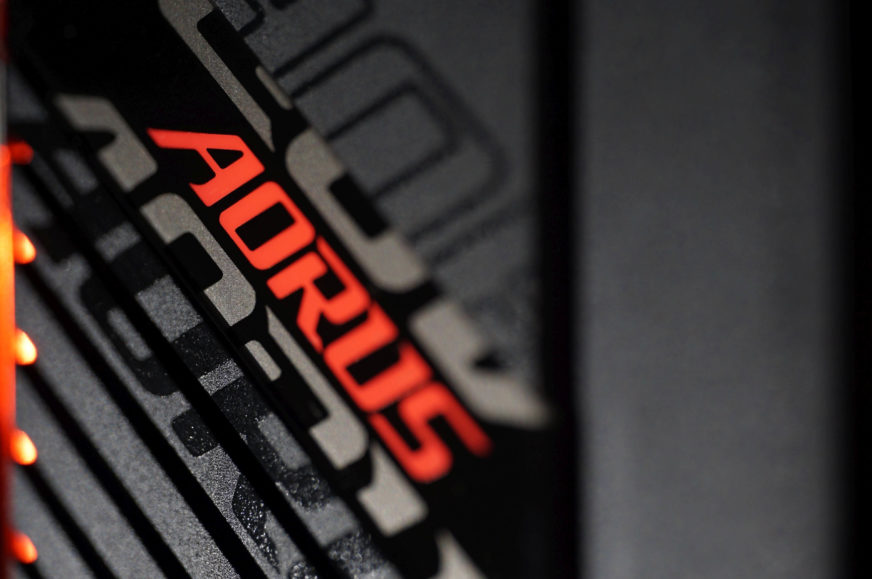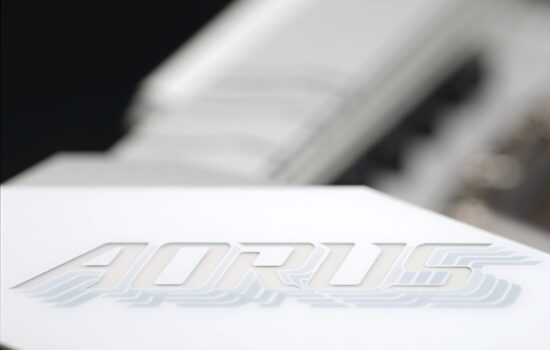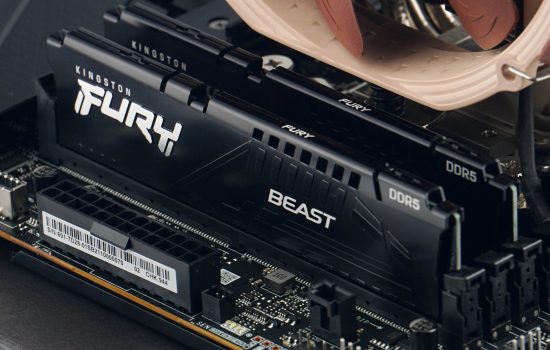Conclusion
Last time, we looked at a motherboard that is suitable for use with cheaper processors thanks to its lower price. Now we have the roughly 50 EUR more expensive Gigabyte B660 Aorus Master DDR4. The premium here has a clear justification and reflects on the better features. The power delivery is significantly more efficient, the heatsinks are more effective, and the features are richer overall, including illumination.
Conclusion
What is the Gigabyte B660 Aorus Master DDR4 motherboard like? Exactly what a decent board without compromises should look like, but at the same time not overpriced for things with marginal use.
Based on hundreds of performance tests, we can say that under no circumstances does the Aorus Master DDR4 get into trouble. The difference in CPU or graphics card performance compared to the cheaper Asus TUF Gaming B660 Plus WiFi D4 board is usually at ±1 %, and if the difference is bigger, the Gigabyte board usually loses a little bit, which can happen for example in lower Full HD resolution in games.
In Boderlands 3 it’s up to 5 %, in F1 2020 up to 4%, in Shadow of the Tomb Raider within 2 %, on the other hand in Metro Exodus the Gigabyte B660 Aorus Master DDR4 has a two percent advantage and worse results never come out even in Total War Saga: Troy. In high UHD/2160p resolution (where the graphics card is already the main influence), there are no differences in game performance anymore.
Under high load (typically 3D rendering, video encoding and the like), performance is about the same and what’s important to the Gigabyte board’s advantage is that it does this with significantly lower power draw. This is determined by the power management and especially by the efficiency of the VRM. In this, the cheaper Asus board is no match for this one from Gigabyte and the differences can be abysmal. With the Core i9-12900K, we measured savings of up to 24 % compared to the TUF board. In other words, the entire platform with otherwise identical components is 77W more power efficient on the B660 Aorus Master, which is a significant difference. And we remind you that the computing performance is the same.
With a cheaper processor, which this class of motherboards is paired with in practice, it is naturally lower. Setting the CPU power draw to 125 W (which is already quite close to the Core i5-12400) the difference in favor of the Gigabyte board is 8 % (about 16 W). It is not only the differences on the Vcore, but also on the 12V branch of the ATX connector, which also powers the PCI Express slots, for example. On the TUF board being compared, the power draw is significantly higher than on the Aorus Master for some reason. Especially in a mode with no power limits on the CPU (and the platform as a whole).
The hottest point of the Aorus Master power delivery is 14 °C lower compared to the TUF board, but the average temperature of the entire cascade is only 1 °C lower.
This speaks to a more even (and therefore better) loading of the voltage regulators on the Gigabyte board.
The B660 Aorus B660 Master DDR4 also has the upper hand in cooling. At least the chipset heatsinks, SSD (but apparently also VRM) are more efficient than on the Asus and MSI boards tested so far. The chipset heats up significantly less than on the MAG B660M Mortar, but more important than that is cooling the SSD. This is also the best yet, with the lowest temperatures in all positions. It can’t be overlooked that Gigabyte’s board is better suited to double-sided SSDs, that is, ones that have memory modules on both sides.
From underneath, below the slot, there is a heat conductive insert that transfers the heat to a larger PCB area of the motherboard.
The layout of the individual elements of the B660 Aorus Master DDR4 is practical (connectors around the edges, large spacing of the first PCI Express slot from the others), and even quantitatively the equipment of everything (including connectors for fans) is decent. It’s just a pity that the 10-gigabit USB ports have been dropped from the external panel, and the jump from 5-gigabit standard 3.2 gen. 1 to is straight to 20-gigabit (3.2 gen. 2×2), but there’s only one of those. Network bandwidth tests showed 26 % slower download speeds than on the TUF Gaming B660 Plus WiFi D4, with the same network adapter, the Intel I225-V. Uploading, on the other hand, is a hair (4.5 MB/s) faster and is already hitting the limits of the 2.5 Gb interface.
Either way, the money you’re paying is reasonable compared to cheaper boards. And owners of more expensive processors in particular should pause and consider this board.
When more efficient VRMs and heatsinks are factored in, a more modern sound chip, more advanced fan management and ARGB LED lighting, the B660 Aorus Master DDR4 comes out in a very good light. From the perspective of the whole platform, the price/performance ratio will be weaker, but that’s naturally not the only thing. This board is a reasonable choice for other, more useful features. The difference in the higher purchase price will be lost (in electricity payments) during use due to the higher quality of the power delivery. It’s more efficient ( than the one on the TUF Gaming B660 Plus and probably compared to most other, cheaper boards), it doesn’t sweat too much and it can handle even the most powerful processors up to LGA 1700 in good shape.
English translation and edit by Jozef Dudáš
| Gigabyte B660 Aorus Master DDR4 |
| + Powerful 18-phase power cascade (VRM)... |
| + ... can efficiently handle even Core i9-12900K without power limits |
| + Excellent price/value ratio |
| + Efficient power management – always low power draw |
| + High efficiency of all heatsinks |
| + Up to three M.2 SSD slots. All with at least PCIe 4.0 support, although the third with only two lanes |
| + Really detailed fan management options |
| + Fast Ethernet connectivity |
| + ARGB LED lighting |
| - Relatively higher price in terms of cheaper processors in the Core i5 class |
| - Older standards HDMI (2.0b) and DisplayPort (1.2) |
| - Slower (than expected) downloads from a 2.5 Gb network |
| - Only four SATA connectors |
| Recommended retail price: 236 EUR |
Games for testing are from Jama levova
Special thanks to Blackmagic Design (for licenses for DeNoise AI, Gigapixel AI and Sharpen AI) and Topaz Labs (for licenses for DeNoise AI, Gigapixel AI and Sharpen AI)
- Contents
- Gigabyte B660 Aorus Master DDR4 in detail
- What it looks like in the BIOS
- Methodology: Performance tests
- Methodology: How we measure power draw
- Methodology: Temperature and frequency measurements
- Test setup
- 3DMark
- Borderlands 3
- F1 2020
- Metro Exodus
- Shadow of the Tomb Raider
- Total War Saga: Troy
- PCMark and Geekbench
- Web environment
- 3D rendering: Cinebench, Blender, ...
- Video 1/2: Adobe Premiere Pro
- Video 1/2: DaVinci Resolve Studio
- Graphics effects: Adobe After Effects
- Video encoding
- Audio encoding
- Photos: Adobe Photoshop, Affinity Photo, ...
- (De)compression
- (De)encryption
- Numerical computing
- Simulations
- Memory and cache tests
- M.2 (SSD) slots speed
- USB ports speed
- Ethernet speed
- Power draw curve (EPS + ATX connector) w/o power limits
- Power draw curve (EPS + ATX connector) with Intel's power limits
- Total power draw (EPS + ATX connector)
- Achieved CPU clock speed
- CPU temperatures
- VRM temperatures – thermovision of Vcore and SOC
- SSD temperatures
- Chipset temperatures (south bridge)
- Conclusion












